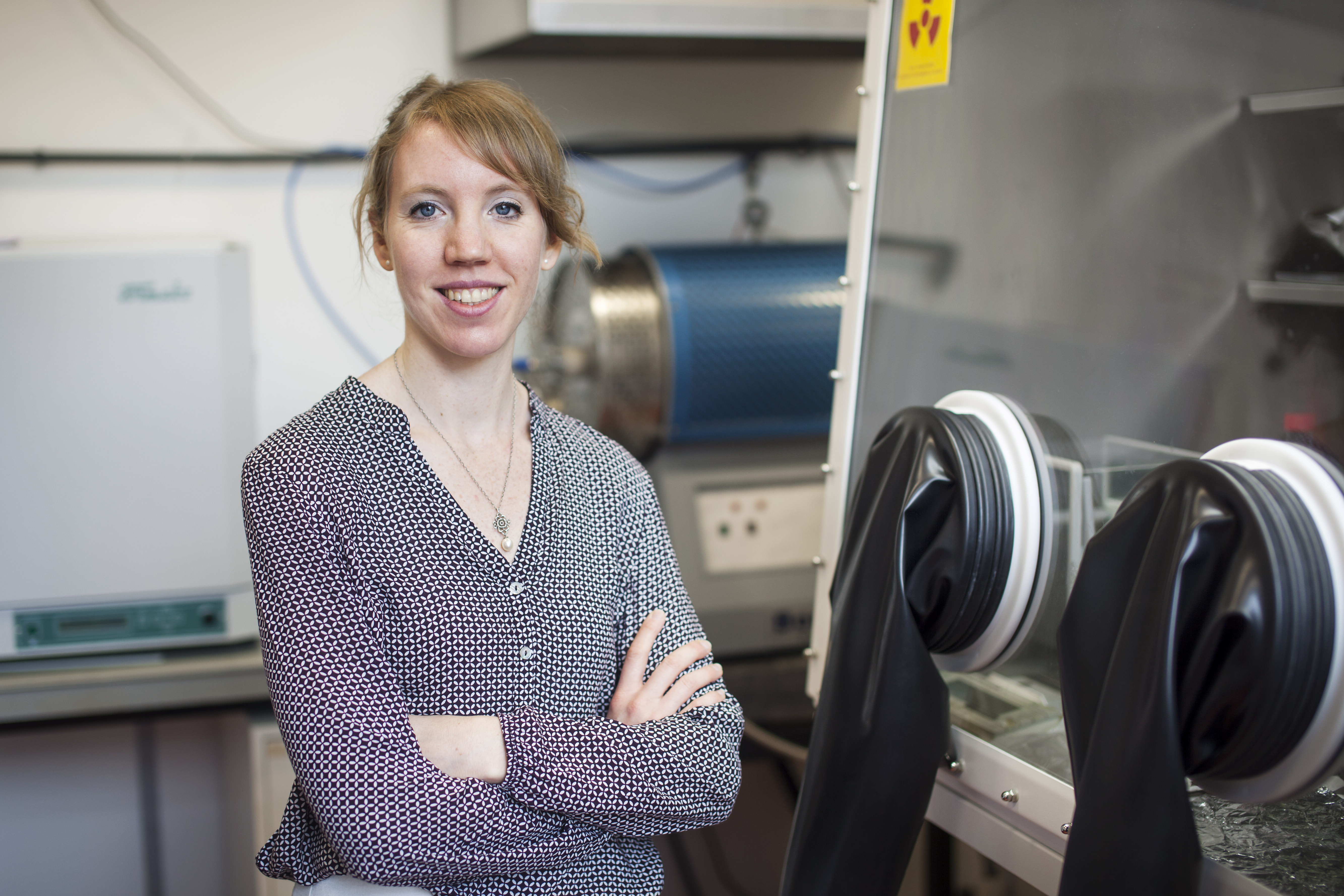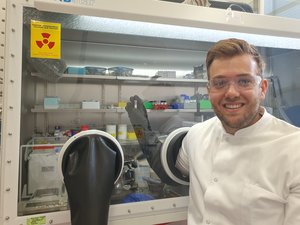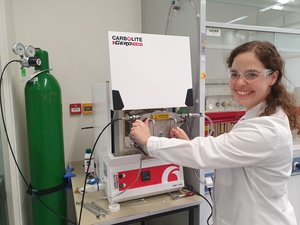From table salt to nuclear energy
TU Delft researchers make the first steps towards green nuclear energy using thorium molten salts
Nick ter Veer, a PhD candidate at the Delft University of Technology, has recently synthesized a promising thorium chloride salt, that can be used to fuel a new generation of nuclear reactors. Thorium has great potential, in combination with an uranium or plutonium based fuel, for a more sustainable nuclear fuel cycle, thereby producing less long lived radioactive waste. Together with the Reactor Physics & Nuclear Materials research team, he is now looking at this salt’s properties, to assess its suitability for use in the so-called Molten Salt Reactors.
Imagine a new generation of nuclear reactors that would be inherently safe, would produce less long lived radioactive waste, and would not rely on limited uranium resources. Researchers at the TU Delft are working towards this dream: a safe and sustainable green nuclear energy based on the Molten Salt Reactor technology. Molten Salt Reactors, in short MSRs, use liquid salts as nuclear fuel in place of the solid fuel used in the current fleet of reactors around the world.
The first developments in the field of Molten Salt Reactors, dates back to the 1960s, when a team at the Oak Ridge National Laboratory, run successfully a first reactor prototype from 1965 to 1969. The technology, although very promising, was not pursued further due to limited technology readiness level and lack of political support. But the MSR technology has regained interest in recent years as breakthrough technology, ideally suited for a sustainable low carbon energy supply. Numerous start-up companies and international research consortia around the world are developing MSR designs at a fast rate. TU Delft is key player in those new developments with pioneering research in the field of nuclear fuel chemistry.
Nuclear fuel is at the heart of the energy production process in a reactor. Its performance and safety are first determined by the fuel properties. In MSRs, the liquid fuel is made of fluoride or chloride salts. Such salts are actually quite common in on our daily life. Sodium fluoride is added to toothpaste to promote remineralization, while sodium chloride NaCl is nothing else than table salt that makes your food more tasty. Very pure sodium chloride is also one of the options for the basis of the fuel salt in a MSR, in combination with elements that can produce the nuclear energy, for instance uranium, thorium or plutonium.
Nick ter Veer, PhD candidate at the Reactor Physics and Nuclear Materials research group, has recently made very pure thorium chloride crystals, which was a first milestone for the work of the research team. Preparing those salts at the purity required for a nuclear reactor is very challenging as they react easily with water and air, and are corrosive at high temperatures.
The work of Nick is embedded in the European project MIMOSA (www.mimosa-euratom.eu), which started one year ago in collaboration between 12 European partners1. MIMOSA aims to generally demonstrate that plutonium and uranium coming from the current fleet of nuclear reactors can be recycled and re-used multiple times, for a more efficient and sustainable nuclear fuel cycle. In this multi-recycling strategy, the plutonium, and other actinide elements with high radioactivity, are dissolved in the molten fuel salt of a chloride based Molten Salt Reactor.
In the coming months, the research team in Delft will further investigate the properties of salt mixtures containing thorium using a combination of experimental and computational techniques. Those studies will allow to predict the nuclear fuel behaviour under normal operation and accidental conditions, or to assess the chemical compatibility of the salt with the structural materials, which is essential for the safety assessment. Another PhD candidate in the team, Ana Sacristán Civera, will look more closely at corrosion issues with this type of salt. She will investigate the chemical degradation phenomena of various metal alloys in contact with the salt at high temperatures.
Research on radioactive materials is generally challenging and the amounts available are limited. The team in Delft often works with surrogate materials that are known to demonstrate a similar chemistry to that of uranium or plutonium for instance. “However, there is no good surrogate material for thorium chloride, so having the facilities to synthesize this material and investigate its properties at the TU Delft is very exciting. This research brings us one step further towards ingenious, safe and sustainable nuclear fuels. ” (Anna Smith, Associate professor and Nick and Ana’s PhD supervisor at the TU Delft).
Anna Smith
1Orano (France), Centre national de la recherche scientifique – CNRS (France), Centrum výzkumu Řež - CVR (Czech Republic), Dutch Institute for Fundamental Energy Research – DIFFER (Netherlands), Electricité de France – EDF (France), Nuclear-21 (Belgium), Nuclear Research and Consultancy Group – NRG (Netherlands), Thorizon (Netherlands), Delft University of Technology (Netherlands), Schunk (Netherlands), European Commission Joint Research Centre, ARTTIC (France)
For more information about the MIMOSA project, visit
https://www.mimosa-euratom.eu


Funded by the European Union. Views and opinions expressed are, however, those of the author(s) only and do not necessarily reflect those of the European Union or Euratom. The European Union nor Euratom can be held responsible for them.

dr. Anna Louise Smith
- +31(0)15-27 82106
- a.l.smith@tudelft.nl
-
Building 50
Room: 1.01.085
Mekelweg 15
2629 JB Delft
The Netherlands

